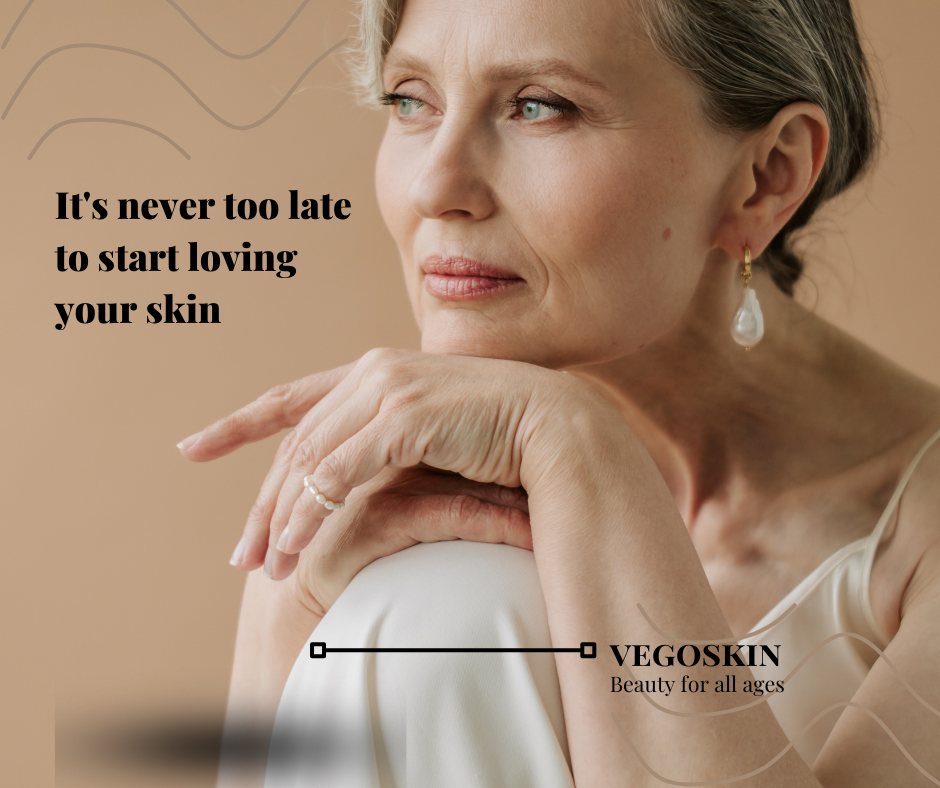How to Start an Anti-Aging Routine Before You Need One
Aging is a natural part of life, but who says you can’t age gracefully and keep your skin, body, and mind vibrant for years to come? Starting an anti-aging routine before you notice fine lines or feel the creak of joints can set you up for long-term health and radiance. The key is prevention—building habits now that protect your skin, boost your energy, and maintain your vitality. In this article, we’ll dive into how to start an anti-aging routine before you need one, offering practical, science-backed tips to help you look and feel your best at any age.
Whether you’re in your 20s, 30s, or beyond, it’s never too early to invest in your future self. From skincare to nutrition, exercise, and mental wellness, we’ll cover the essentials of an anti-aging lifestyle. Let’s explore how small, consistent changes can make a big difference over time.
Why Start an Anti-Aging Routine Early?
The science of aging tells us that changes in our skin, muscles, and organs begin long before we see or feel them. Collagen production starts to decline in your mid-20s, and oxidative stress from environmental factors like UV rays and pollution can accumulate over time. By starting an anti-aging routine early, you’re not just delaying visible signs of aging—you’re supporting your overall health.
Preventive care is like saving for retirement: the earlier you start, the bigger the payoff. A proactive approach can reduce the risk of age-related issues like wrinkles, joint pain, or cognitive decline. Plus, building healthy habits now makes it easier to stick with them as you age. So, let’s break down how to start an anti-aging routine before you need one with actionable steps.
1. Prioritize Skincare: Your First Line of Defense
Your skin is your body’s largest organ and the most visible indicator of aging. A solid skincare routine is the cornerstone of any anti-aging plan. Here’s how to get started:
Cleanse Gently but Thoroughly
Cleansing removes dirt, oil, and pollutants that can accelerate aging. Opt for a gentle, hydrating cleanser to avoid stripping your skin’s natural oils. Look for ingredients like glycerin or ceramides to maintain your skin’s barrier. Avoid harsh soaps, which can cause dryness and irritation.
Pro Tip: Double cleansing at night (using an oil-based cleanser followed by a water-based one) is great for removing sunscreen and makeup without compromising your skin’s moisture.
Moisturize Daily
Hydrated skin looks plump and youthful. Choose a moisturizer with hyaluronic acid, which can hold up to 1,000 times its weight in water, or peptides to support collagen production. Apply moisturizer morning and night to lock in hydration.
Use Sunscreen Every Day
Sun exposure is the number one cause of premature skin aging, contributing to wrinkles, age spots, and loss of elasticity. Use a broad-spectrum SPF 30 or higher daily, even on cloudy days. Reapply every two hours if you’re outdoors. For added convenience, try a moisturizer with built-in SPF.
Resource: The Skin Cancer Foundation offers excellent tips on sun protection and choosing the right sunscreen.
Incorporate Antioxidants
Antioxidants like vitamin C, vitamin E, and niacinamide neutralize free radicals, which are unstable molecules that damage skin cells. A vitamin C serum in the morning can brighten your complexion and protect against environmental stress. Start with a 10% concentration to avoid irritation.
Retinol: The Gold Standard
Retinol, a derivative of vitamin A, is a powerhouse for anti-aging. It boosts cell turnover, reduces fine lines, and stimulates collagen production. Begin with a low concentration (0.25% or 0.5%) and use it 2–3 times a week at night to build tolerance. Always follow with a moisturizer to minimize dryness.
Pro Tip: Pair retinol with sunscreen, as it can make your skin more sensitive to UV rays.
2. Nourish Your Body with Anti-Aging Foods
What you eat plays a massive role in how you age. A nutrient-rich diet supports your skin, brain, and overall health. Here’s how to eat for longevity:
Load Up on Antioxidants
Foods high in antioxidants combat oxidative stress, which contributes to aging. Berries, leafy greens, nuts, and colorful vegetables like sweet potatoes and bell peppers are packed with vitamins A, C, and E. Aim for a rainbow of produce to get a variety of nutrients.
Prioritize Healthy Fats
Omega-3 fatty acids, found in fatty fish (like salmon), walnuts, and flaxseeds, keep your skin supple and reduce inflammation. Avocados and olive oil are also great sources of monounsaturated fats that support heart and skin health.
Stay Hydrated
Dehydration can make your skin look dull and emphasize fine lines. Drink at least 8 glasses of water daily, and include hydrating foods like cucumbers, watermelon, and oranges. Herbal teas and coconut water are great additions to your hydration routine.
Limit Sugar and Processed Foods
Excess sugar can trigger glycation, a process where sugar molecules damage collagen and elastin, leading to sagging skin. Processed foods high in trans fats and sodium can also cause inflammation. Focus on whole, unprocessed foods to keep your body in top shape.
Resource: For more on anti-aging nutrition, check out Harvard Health’s guide to healthy eating.
3. Exercise for a Youthful Body and Mind
Physical activity is a key component of how to start an anti-aging routine before you need one. Exercise improves circulation, boosts mood, and keeps your muscles and bones strong. Here’s how to incorporate it:
Strength Training
As we age, muscle mass naturally diminishes, but incorporating strength training can help slow this decline. Aim for 2 to 3 sessions each week, focusing on major muscle groups. For beginners, bodyweight exercises such as squats, push-ups, and planks are excellent choices. Once you feel ready to use weights, start with light dumbbells and gradually increase the resistance.
Cardio for Heart Health
Cardiovascular exercise, like brisk walking, running, or cycling, supports heart health and improves stamina. Aim for at least 150 minutes of moderate-intensity cardio per week. High-intensity interval training (HIIT) is a time-efficient option that also boosts metabolism.
Flexibility and Balance
Yoga and Pilates improve flexibility, balance, and core strength, reducing the risk of falls as you age. These practices also promote relaxation, which helps manage stress, a major aging accelerator.
Pro Tip: Apps like MyFitnessPal or FitOn offer free workouts tailored to your fitness level.
4. Protect Your Mental Health
Aging isn’t just about your body—it’s about your mind, too. Chronic stress and poor sleep can accelerate aging by increasing cortisol levels, which break down collagen and impair cell repair. Here’s how to nurture your mental well-being:
Practice Stress Management
Meditation, deep breathing, or journaling can lower stress and improve resilience. Even 10 minutes a day can make a difference. Apps like Calm or Headspace offer guided meditations for beginners.
Prioritize Sleep
Sleep is when your body repairs itself. Aim for 7–9 hours of quality sleep per night. Create a bedtime routine: dim the lights, avoid screens an hour before bed, and keep your bedroom cool and dark. Magnesium supplements or chamomile tea can promote relaxation.
Stay Socially Connected
Strong social connections are associated with a longer, healthier life. Make sure to spend time with friends and family, join clubs, or get involved in community volunteer work. Staying socially active not only sharpens your mind but also uplifts your mood.
5. Build a Consistent Routine
The key to starting an effective anti-aging routine is consistency. Small, sustainable changes tend to be much more effective than drastic alterations. Here’s how to embed these habits into your life:
Start Small
Avoid overwhelming yourself by trying to change everything at once. Focus on incorporating one or two habits, like applying sunscreen daily or drinking more water. Once these habits feel natural, gradually add more.
Track Your Progress
Use a journal or app to track your skincare, diet, exercise, and sleep habits. Seeing your progress can keep you motivated. Apps like Habitica gamify habit-building for extra fun.
Consult Professionals
A dermatologist can recommend personalized skincare products, while a nutritionist can tailor a diet to your needs. Regular check-ups with your doctor can catch potential issues early.
6. Avoid Common Aging Accelerators
Some lifestyle habits can speed up aging. Here’s what to watch out for:
Smoking
Smoking damages collagen, causes wrinkles, and reduces blood flow to the skin. If you smoke, seek support to quit. Resources like Smokefree.gov offer free tools and tips.
Excessive Alcohol
Heavy drinking dehydrates your skin and depletes nutrients. Limit alcohol to one drink per day for women and two for men, and pair it with water to stay hydrated.
Sedentary Lifestyle
Prolonged sitting can weaken muscles and hinder proper blood flow. Make it a habit to take breaks every hour to stretch or take a short walk, especially if your job involves sitting at a desk for extended periods.
7. Stay Educated and Adapt
Anti-aging science is always evolving. Stay informed by following reputable sources like WebMD or Mayo Clinic. As you age, your needs will change, so be ready to adapt your routine. For example, you might need a richer moisturizer in your 40s or more protein in your diet as you age.
Conclusion: Invest in Your Future Self
Building an anti-aging routine before you actually need one empowers you to take charge of your health and appearance today, paving the way for a healthier future. By focusing on skincare, nutrition, exercise, mental well-being, and healthy habits, you’re laying the groundwork for a dynamic and youthful tomorrow. Start with small changes, remain consistent, and don’t hesitate to seek professional guidance when necessary.
While aging is a natural part of life, the way you experience it is largely within your control. Embrace these tips, integrate them into your daily routine, and observe the positive impact they can have on your skin, body, and mind. Your future self will be grateful for the care you invest today.



